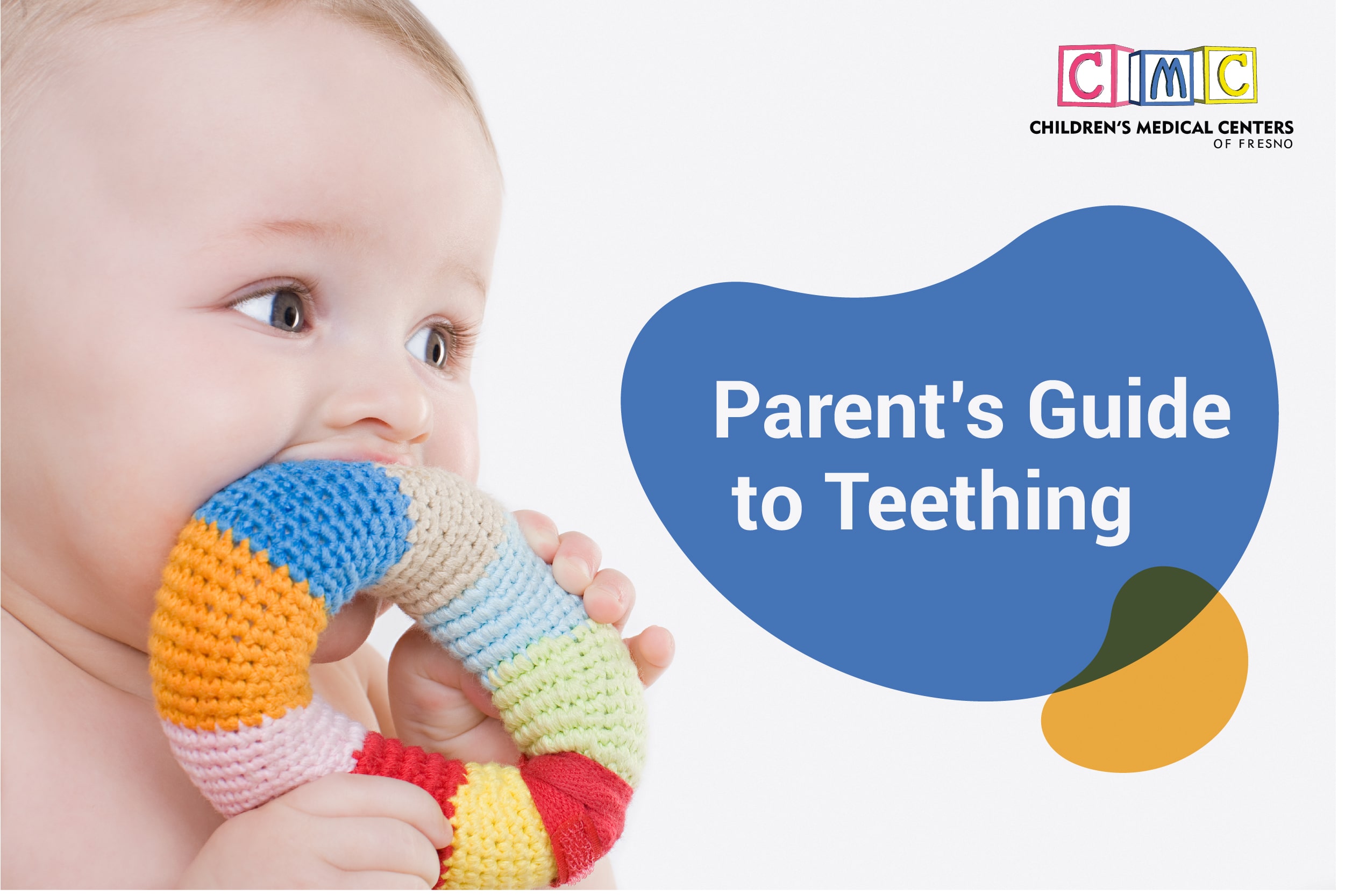Teething is a perfectly normal part of baby development and causes no harm to your infant’s mouth and teeth. However, this is often a difficult time for parents and their babies alike. Some parents may not know what to expect or how they can help their child when teething pain kicks in. More often than not, you end up with more sleepless nights.
Having a child who is teething can be a challenge. That’s why CMCFresno created a teething guide with some helpful information on teething symptoms and tips for helping your little one through this exciting yet painful time.
What is Teething?
The eruption of teeth through the gums during infancy is called teething. Usually, one tooth erupts at a time, and each tooth takes several months to come through completely. A small white spot will appear on one of your baby’s teeth called the “baby tooth” or “incisor.” This is a normal and natural process that babies go through as they grow from milk to solid food. But teething can be painful for infants that cause them to become irritable. It results from the gums separating from the teeth, along with the swollen and tender gums.
Teething Symptoms
Growing their first set of choppers affects your baby physically and emotionally, but it passes and eventually disappears with time. Here are the signs that your child is teething.
- drooling (If the baby drools, wipe it off gently with a clean cloth to avoid rashes on their face.)
- crankiness or restlessness
- sucking on objects
- chewing on things
- difficulty sleeping
- visible redness of the gums
- sensitivity to touch or pressure on the gums
- uncontrollable crying
- lack of appetite
- low-grade fever- this can be a sign of infection, so you need to consult with your doctor immediately.
What Are the Teething Stages?
The average teething timeline for babies starts between 4 to 8 months old. However, it can happen earlier or later, depending on your baby’s development. The two bottom front teeth usually pop through around six months of age, while the rest will slowly emerge over time until they have 20 baby teeth by age 3. This continues until your child is three years old. Some children start teething sooner or later than others, but most babies will show signs of teething between 7-12 months.
Please visit your pediatrician if your baby has not developed teeth by the time they are 12 months old. In some rare cases, lack of tooth development is caused by an underlying medical condition that a doctor should diagnose as soon as possible.
What You Can Do to Relieve Your Child’s Pain?
Any parent who has been through the teething experience will tell you that it’s not always easy to know what your child needs. Fortunately, you can do many things to help them get through this tough stage. Here are some steps you can take to ease teething pain.
- It’s okay to massage the gums with a clean finger or wet washcloth if the area is not too sensitive. Light pressure or friction on the gums can provide some relief.
- Apply a cold spoon or cold cloth to the area causing your baby pain. The cold will numb the area for a short time and help with the swelling during teething.
- Teething toys made of plastic and rubber soothe aching gums well. Do not let your child use teething necklaces, bracelets, or anklets, as they present a choking hazard and could cause mouth injuries. The Food and Drug Administration (FDA) does not recommend these products.
- You can also offer chilled, soft foods like mashed bananas or yogurt to soothe sore gums. It is best to avoid feeding your infant teething biscuits or frozen food such as fruit slices that could break into pieces in their mouth and cause choking.
- When none of the above methods work, try over-the-counter pain relievers like baby-safe ibuprofen and acetaminophen products. In addition, topical painkillers, both over-the-counter or prescription ointments, are not advised by the FDA to treat tooth pain. Consult your pediatrician about the effectiveness and safety of all medications your child will use.
Preventing Baby Teeth Decay
Healthy baby teeth are essential for a growing child’s overall health and development. The best way to prevent cavities and tooth decay is to ensure that your child keeps their mouth clean by brushing their teeth at least twice a day using a rice-sized fluoride toothpaste and a soft-bristled toothbrush. It is best to wait until children are two years old before using toothpaste with fluoride.
Moreover, preventing baby teeth decay also has a connection with a healthy diet. Feed your child nutritional foods, including lots of high-fiber foods like fruits, vegetables, and whole grains.
When it comes to treats, it should be kept to a minimum and ideally avoided altogether. If you do allow your child to eat sweets, brush their teeth as soon afterward as possible. And try to limit the frequency of sugary snacks and drinks during the day. Most children who have too much sugar intake from juice and soda end up getting cavities.
Also, don’t let your child fall asleep with a bottle in their mouth. Allowing them to sleep with a bottle in their mouth is a breeding ground for bacteria, which leads to tooth decay.
Last but not least, schedule their appointment with a pediatric dentist. Dentists can examine their teeth and advise them on maintaining their dental health while they wait for their new teeth to emerge.
Conclusion
So, there you have it! Hopefully, this gives you a basic, overall understanding of teething and how to treat it. Implementing the tips discussed here will prepare parents to handle teething problems as they arise.
If you encounter any difficulties and need additional guidance, don’t hesitate to reach out to CMCFresno. Contact us by calling (559) 455-1500, or you can set up an appointment online.



